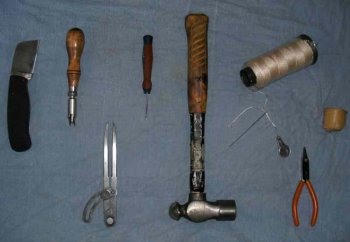leatherman
Sheath Forum Moderator
Dave and I have decided to have an informational thread for those who have discovered a nifty trick, or have some tips for those starting in the trade or for those of us like me that never stop learning. My thirst for knowledge is never satiated. cool 1
Please dont hesitate to post your discoveries, tips, tricks, time savers, even basic techniques. Nothing is too simple, especially for those of us starting out. I learned most of mine through the generosity of those that started ahead of me. Those that inspired me to do more and better: Dave Cole (DC Knives), Sandy Morissey, and though came on to the internet later than me has inspired me as well, Paul Long (sheathmaker), and Gary Graley, folder sheath maker extraordinaire.
Lets hear those tips!!!
Please dont hesitate to post your discoveries, tips, tricks, time savers, even basic techniques. Nothing is too simple, especially for those of us starting out. I learned most of mine through the generosity of those that started ahead of me. Those that inspired me to do more and better: Dave Cole (DC Knives), Sandy Morissey, and though came on to the internet later than me has inspired me as well, Paul Long (sheathmaker), and Gary Graley, folder sheath maker extraordinaire.
Lets hear those tips!!!

